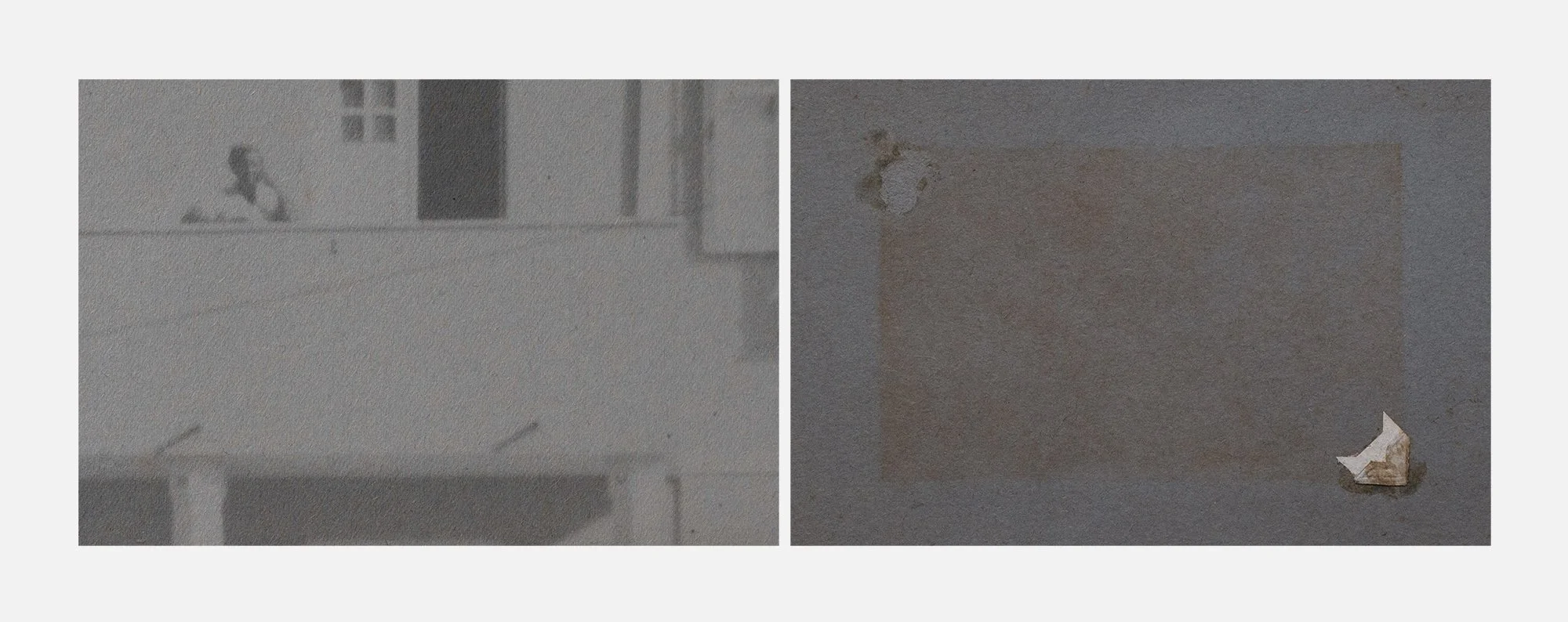WHITE BALANCE
White balance faz parte do projeto A vida está em outro lugar / White balance is part of the project Life is elsewhere
A tecnologia fotográfica sempre favoreceu a pele branca e distinguia de maneira precária todas as demais variações de tons de pele nas imagens. Um balanço de branco, por brancos e para brancos.
Photographic technology has always favored white skin and poorly distinguished all other variations of skin tones in the images. The white balance made by whites for whites.
Todas as vezes que a fotometria era tida como adequada, considerando sempre as pessoas brancas da família, minha avó Anália ficava subexposta de modo a tornar seus traços, sua expressão e sua própria existência menos distinguíveis na imagem fotográfica. No acervo de documentos, objetos e álbuns de fotografia herdados de minha família materna encontrei uma estrada bipartida fundada em um casamento interracial no interior da Bahia, na cidade de João Amaro, no início do século XX.
Essas memórias, agora misturadas entre o que consegui viver ao lado dela e o que me contaram sobre sua personalidade, me incomodam. Encontrei poucas imagens de minha avó Anália desde que comecei a visitar o acervo de objetos e fotografias familiares, há dois anos. Interessei-me por adentrar esse arquivo pessoal munida do que eu tinha: fotografias, cartas e documentos de meu avô Guilherme Vostal. Ele estava em foco: homem, branco, europeu. Do meu avô, tcheco e branco, tenho todas as ligações familiares, as histórias, as memórias e os documentos preservados. De minha avó, baiana e negra, tenho tão somente o oco e as dúvidas. E foi justamente esse foco que me conduziu a um desvio: por que faltavam imagens de minha avó e sobravam das outras pessoas?
Incomodada com a invisibilidade de minha avó Anália em meio a uma família majoritariamente branca e uma tecnologia cujo padrão a escanteou, pretendo empreender uma busca pelo pedaço da história que me falta e me constitui como pessoa. Percebo, hoje, como o apagamento de minha avó e sua história se deu em função de uma cultura que tem o branco como paradigma. Procuro torná-la visível operando com uma ideia dos dispositivos existentes àquela época para a produção da fotografia. Intento trazer minha avó ao centro da discussão e quando tento fazê-la visível, empalidece, vira cinza, perde sua identidade. Quando aumento o tempo de exposição, tudo à sua volta desaparece. Há um duplo desaparecimento contra o qual preciso lutar.
O balanço de branco não corrigiu automaticamente a temperatura de cor para minha avó e a fotometria a preteriu. Quando a indústria visual da fotografia resolveu ampliar a gama de marrons nas emulsões fotográficas nas décadas de 1960 e 1970 foi em favor das fábricas de chocolate - melhor distinção entre os tipos ao leite, meio amargo e amargo - e de móveis – diferenciação adequada sobre os padrões de cor das madeiras[1]. A tecnologia fotográfica sempre favoreceu a pele branca e distinguia de maneira precária todas as demais variações de tons de pele nas imagens. Um balanço de branco, por brancos e para brancos.
[1] Questão de pele. (2016, June 23). ZUM. https://revistazum.com.br/revista-zum-10/questao-de-pele/
Every time photometry was deemed adequate, considering the white people in the family, my grandmother Anália was underexposed so that her traits, her expression, and her own existence became less distinguishable in the photographic image. In a collection of documents, objects, and photo albums inherited from my maternal family, I came across a two-way street based on an interracial marriage in the interior of Bahia, in the city of João Amaro, in the early twentieth century.
These memories, now mixed between what I was able to live next to her and what they told me about her personality, bother me. I have found few images of my grandmother Analia since I started visiting the collection of family objects and photographs two years ago. I was interested in entering this personal archive armed with what I had: photographs, letters, and documents of my grandfather William Vostal. He was in focus: man, white, European. From my grandfather, Czech and white, I have all the family connections, the stories, the memories, and the documents preserved. From my grandmother, Bahian and black, I have only the hollow and the doubts. And it was precisely this focus that led me to a detour: why were there so few images of my grandmother and so many of other people?
Disturbed by the invisibility of my grandmother Anália during a mostly white family and a technology whose pattern cornered her, I intend to undertake a search for the piece of history that I lack and constitutes me as a person. I realize today how my grandmother's payment and her history was due to a culture that has white as a paradigm. I try to make it visible by operating with an idea of the devices existing at that time to produce photography. I try to bring my grandmother to the center of the discussion and when I try to make her visible, she becomes pales, turns gray, loses her identity. When I increase the exposure time, everything around her, disappears. There's a double disappearance I need to fight against.
The white balance did not automatically correct the color temperature for my grandmother and the photometry deprived her. When the visual photography industry decided to expand the range of browns in photographic emulsions in the 1960s and 1970s it was in favor of chocolate factories - better distinction between types to milk, bitter and bitter medium - and furniture - adequate differentiation on the color patterns of the woods[1]. Photographic technology has always favored white skin and poorly distinguished all other variations of skin tones in the images. The white balance made by whites for whites.
[1] Questão de pele. (2016, June 23). ZUM. https://revistazum.com.br/revista-zum-10/questao-de-pele/












